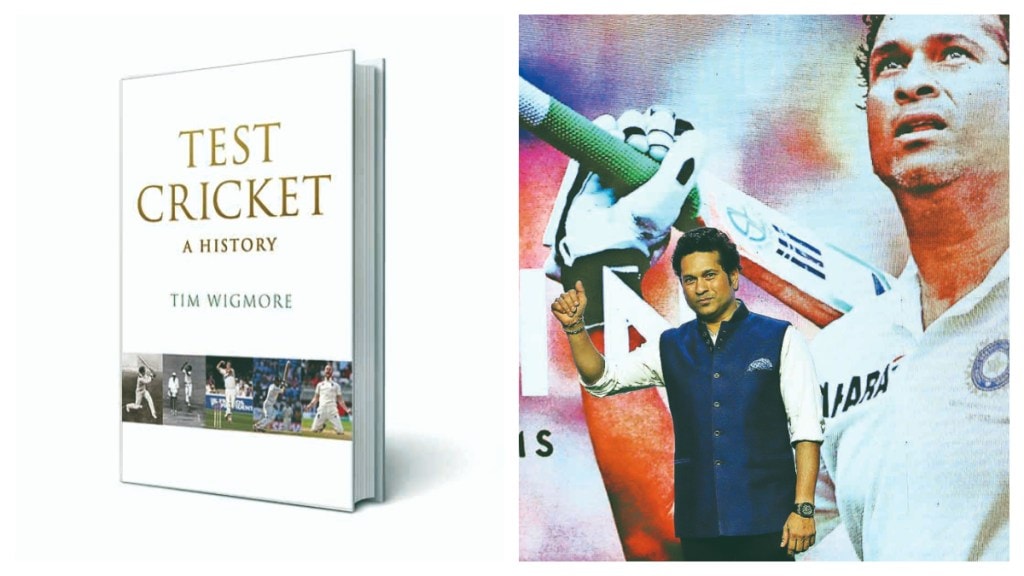When a fast bowler runs into bowl and delivers at over 100 miles per hour, the pace at which one runs is around 25 km/hour—faster than the 20-km upper limit of a treadmill. It is thus not surprising that several fast bowlers run the risk of injury as all body parts are endangered with such rigorous action. That’s why one keeps hearing of several fast bowlers getting injured often or ending up slowing down and concentrating more on swing and direction.
These kind of observations, along with some very pertinent anecdotes involving interviews with cricketers, makes the book, Test Cricket, by Tim Wigmore an excellent treatise on the game and its evolution. The author starts off by extolling the finer points of Test match cricket, writing that it is more like letting the cup of tea brew, compared with a tea bag, which can be likened to the 20 or 50-overs format. It is a gentle throwback to the history of cricket and the way it was played in a more casual mode than what it is today. The cadence of Test cricket has not quite been eroded, even as the shorter versions draw more crowds. But, this book is not a comparison of different formats of the game. It has several chapters on not just matches and players, but also several episodes that could be called rather revolutionary as they marked a change in the complexion of the game.
There were times when players mattered more than the game. Yes, the legendary WG Grace refused to leave the field after getting out early. The reason given was that as the audience had come to see him bat, it was fair that he be considered not-out. Even more interesting are the stories of cricketers being paid based on collections from the tickets. Things are evidently different now. While the book is quite voluminous and tries to move chronologically, the reader can start anywhere. Those who have lived the game through, say the Sixties and Seventies, may like to relive the era or could just fast forward and read about bazball, which is the aggressive form of cricket introduced by Ben Stokes and England. There are chapters on different cricketers, which can be Tendulkar or Warne or Muralidharan. In fact, the last one is interesting as it also takes us through Murali’s personal turmoil when he was called out successively for chucking. Quite appropriately it is titled ‘The magic and mystery of Murali’.
Several famous episodes are covered in this narrative, with the first controversial one being the infamous bodyline series where Don Bradman was targeted. The same approach of attacking the body got repeated when the deadly duo of Dennis Lille and Jeff Thomson targeted English batsmen, which was followed up soon by the West Indies versus India when Michael Holding and Andy Roberts did considerable damage to the Indian players, not sparing the bowlers even.
That was the turning point for the West Indies team when they followed a new course, dispensing with spinners.
At a different level, Wigmore writes about how the Indian spinners under Pataudi made a difference to the world of cricket with eloquent spin that won matches. This was also the time when India became a force in Test cricket with the spinners coming in to bowl on any wicket just after a couple of perfunctory overs were bowled by the medium fast bowlers. Here was a magic winning formula for India where the batsmen supported the effort that was driven by the spinners. This was to be resurrected elsewhere when Shane Warne had similar performances for Australia.
There is also the sticky issue of umpiring where the author traces the evolution of this art which was engendered mainly due to growing dissatisfaction for touring teams which had to confront umpires from the home side. Interestingly, all countries felt they got a raw deal in Sri Lanka and Australia as umpires tended to be biased. This was seen especially when leg before wicket decisions were given with alacrity when the visiting team was batting.
There were bizarre displays of anger when this became excessive and captains even took their teams off the field. On one occasion Michael Holding did not hesitate to kick the wicket in New Zealand. It was this constant distrust with umpires that gave birth to the concept of neutral umpires. There was a good deal of acceptance, though it started with just one umpire being from a neutral country while the second was from the host country.
As this concept caught on, it was extended to the now well established DRS, which is the decision review system. While it has not eliminated dissatisfaction, it has certainly brought down the margin of error as it is technology that is largely taking decisions.
There are writings on the emergence of New Zealand too, which has not always found it easy to field a team. The travails of South Africa also find mention from the time the country was boycotted due to apartheid and their reemergence into Test cricket. There is also a chapter titled ‘More than just a Commonwealth club’, where he talks of recognition of new teams in the Test arena—Afghanistan and Ireland.
‘How to buy a match’ is another interesting chapter where he talks of the betting incidents in cricket which involved the late South African captain, Hanse Cronje. While this is the darker part of the country’s evolution, there are some stories of outstanding players like Kallis, De Villiers, Graeme Smith, etc.
If one is looking for an easy read on Test cricket, this is the book to pick up. With 35 distinct chapters that take the reader across geographies and time periods, one can be more than satisfied browsing the pages.
Madan Sabnavis is chief economist, Bank of Baroda
Book name: Test Cricket: A History
Author: Tim Wigmore
Publisher: Hachette
Pages: 400
Price: Rs 899









